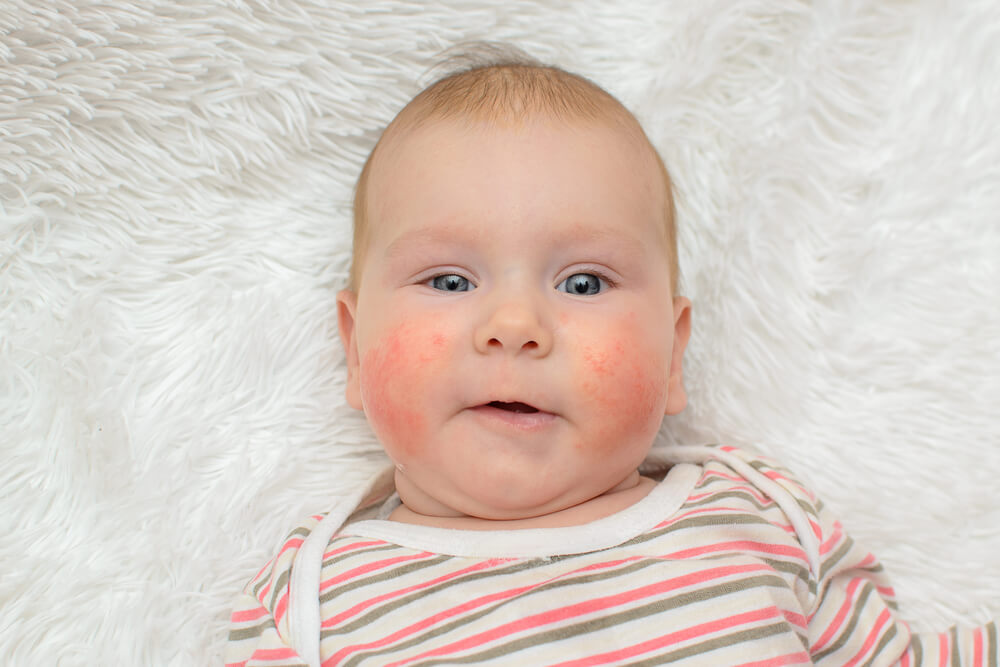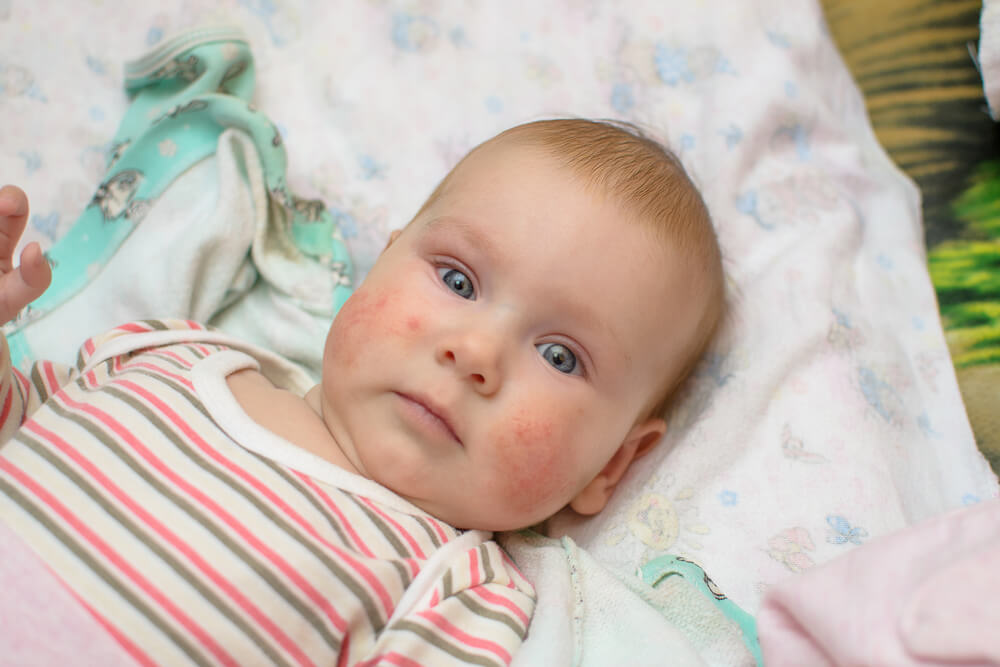What are Epstein pearls? They have become the most used term to describe white bumps on babies’ gum and mouth. In some cases, these white bumps are deceiving as they may look like baby teeth. Still, they are not teeth. Epstein pearls are technically acne that develops in the mouth. Fortunately, the condition is benign and will usually resolve on its own without affecting the infant’s health in any way.
If you are worried that the white bumps in your baby’s gums are from bad hygiene practices, you can always learn more about cleaning your baby’s tongue and mouth. Also, if you are looking for general pediatric care in Plantation and Doral, Florida, feel free to schedule an appointment with us after reading this article on Epstein pearls. The experts at Worldwide Pediatrics Group are ready to answer all your questions and concerns.
Epstein Pearls: What Do They Look Like?

These pearls look like tiny whitish bumps on your baby’s gum and mouth. More specifically, they appear underneath the skin, and they are yellowish-whitish lesions or cysts that form on the gums or the mouth’s roof.
The bumps are tiny, usually no larger than a few millimeters in diameter, and once they develop, they shouldn’t grow bigger as time passes. Still, if they do manage to develop into larger lesions, call your child’s pediatrician as soon as possible. Thor placement and development are usually random, and they may appear as a group of lesions (at least from two to six) or as a single cyst.
Still, most often, parents are most concerned about the development of a single pearl on the gums, which may often resemble a baby’s tooth that’s trying to break through. And telling the difference can often be challenging, as the Epstein pearls tend to be just as firm to the touch, like baby teeth.
Lastly, these white bumps cause no additional symptoms. Epstein pearls are benign and lead to no complications with teething or feeding. Still, if the baby does show any signs of discomfort because of the lesions, they should be checked out by an expert.
Epstein Pearls: What Causes Them?
The condition is quite prevalent in newborns, as around 90% of them may develop these white bumps. Usually, they only develop them in early infancy, as they are much less prevalent after three months old.
The condition is usually caused by the keratin buildup both in the hard and the soft palates. As you may know, keratin is the main material that makes up our nails and hair. The pearls are similar to milia on people’s faces, a harmless buildup of bumps that are skin cells.
What actually triggers the keratin buildup is somewhat unknown. Some experts believe that during gestation, some tissue gets trapped during palate development, and then the small bumps develop under the mouth’s skin shortly after birth.
Diagnosing Epstein Pearls
Your child’s pediatrician will start the diagnostic process with a physical exam that will focus on the baby’s mouth to ensure that the pearls aren’t actually new teeth. While, for the most part, experts will succeed at diagnosing Epstein pearls after a single physical exam, if they find other symptoms, they may conduct more tests as those might suggest a different condition.
These conditions may be the following:
- Bohn nodules: These are very similar to Epstein pearls, but they only develop on the ridge just behind the front teeth on the mouth’s roof. These lesions are grayish-white and are on mucous glands.
- Congenital epulis: The condition signals the presence of a rare, benign tumor that is attached to the tissue in the mouth with an appendage resembling a stem. They are usually ten times more prevalent in newborn girls than in baby boys. The tumor may lead to difficulties with breathing and eating and will be surgically removed.
- Dental lamina cysts: These bumps and lesions are also pretty similar to pearls but are slightly bigger and more transparent. They are also harmless and will resolve on their own.
Epstein Pearls Treatment
As mentioned above, when it comes to Epstein pearls, treatment isn’t always necessary, as the bumps and lesions will likely resolve without any intervention within a few weeks or months. They usually rupture or fade away, releasing the trapped keratin.
While Epstein pearls will naturally rupture over time, it’s essential to avoid any attempts to expedite the process yourself. Doing so can result in irritation, infection, or inflammation. Medical professionals also refrain from removing Epstein pearls, as intervening for this condition could unnecessarily stress your baby. It’s worth noting that this growth does not impact your baby’s health or their ability to feed, so it’s best to allow them to heal naturally.
Cases That Warrant A Visit to The Doctor
It’s natural for caregivers and parents to feel unease and have concerns that the lesions and bumps in their infant’s mouth might originate from a different cause.
That said, the following medical problems and symptoms may resemble the white bumps caused by Epstein pearls, and differentiating between them may be difficult. That said, if you see anything unusual in the baby’s mouth, it’s highly recommended that you reach out to their pediatrician.
Natal or Newborn Teeth
In some cases, people may mistake pearls for newborn teeth when they develop on the gums. Even though it’s extremely rare, newborns can have teeth (happening only once in every 800 to 600 cases).
If there are any natal teeth present, it should be discussed with the infant’s pediatrician, as in some cases, the teeth become loose or make feeding more difficult, meaning that they may need to be removed.
Oral Thrush
The white spots may also signal oral thrush, which is a fungal infection. This often happens when Candida yeast manages to get inside the baby’s mouth, infecting the tissue inside.
The infection may lead to white bumps or patches in the mouth, and they may appear on the tongue and the inside of the cheeks as well. Even though it’s not serious, the infection may lead to difficulty feeding or discomfort, but it’s not overly serious.
Pediatricians will usually remedy the problem with antifungal compounds.
Fusssines and Other Issues
Even though Epstein pearls do not cause any symptoms, if the baby has trouble feeding, seems overly fussy, and generally seems unwell, they should be checked by an expert to rule out any other health conditions.
Hand, Foot, and Mouth Disease

Hand, foot, and mouth disease, a common viral infection among children below the age of 5, typically resolves naturally within a few days. Symptoms encompass mouth sores that blister, often commencing as tiny red spots in the rear of the mouth. These sores can induce discomfort, leading to fussiness and feeding difficulties.
If a child displays any symptoms of this ailment, consulting a pediatrician is recommended. In certain instances, it may result in dehydration, particularly if the child struggles to consume sufficient fluids.
Learn More
While Epstein pearls are harmless, it’s imperative that you understand the nature of the condition and notice if the bumps are the result of something else. That said, schedule an appointment with us whether your baby has Epstein pearls or you just simply want to learn more about the condition.



